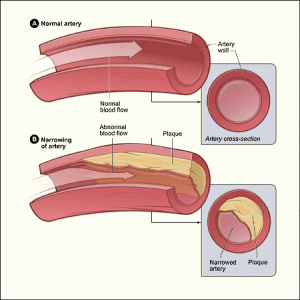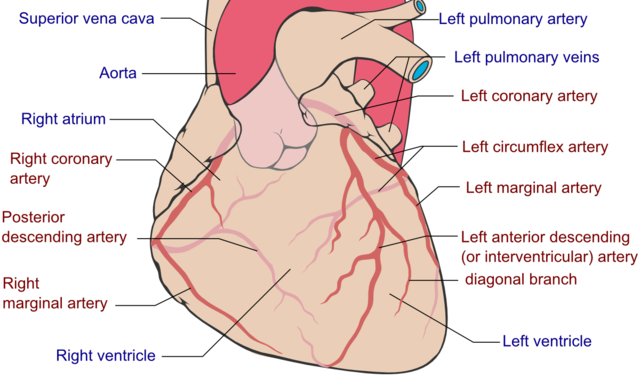Trainer Bob Harper Fights Back From Major Heart Attack

Celebrity Trainer Bob Harper is known for his toughness when working with clients from The Biggest Loser. But this was nothing compared to the mental and physical toughness he would need to overcome an almost devastating medical condition. Seven weeks ago, after training at a New York gym, Bob Harper collapsed to the floor. He was not breathing, and his heart had stopped. Fortunately, a club trainer found two doctors working out at the club and they were able to perform CPR and use a portable defibrillator on him before the paramedics arrived.
Harper was in a medically induced coma for two days and had two stents placed in his coronary arteries to prevent another heart attack. He’s been closely working his way back to health, and in a first public appearance since the incident, talked to Savannah Guthrie on the Today show this morning.
Harper said that he was incredibly grateful to be there: “I had what they call a ‘widow-maker. It was a 6 percent survival rate, and the fact that there were doctors in the gym when I had the heart attack saved my life.” He said that he doesn’t remember anything about that day, and kept asking his friends why he was in the hospital after he woke up.
Harper admits the adjustments have been hard. He’s had some depression. “You really face your mortality. And I’m really understanding what’s important in life.”
Although Harper ate healthy and exercised extensively, he wasn’t immune to heart disease. In fact, there is a family history of heart disease in his family, and his mother had a fatal heart attack.
Harper hopes he can get the message out that knowing your family history, as well as seeing a physician to check your heart health is important for everyone.
Getting to the Heart of the Matter
 Coronary artery disease (CAD) is the most common kind of heart disease. It is the leading cause of death in the United States.
Coronary artery disease (CAD) is the most common kind of heart disease. It is the leading cause of death in the United States.
It occurs when the blood vessels that supply blood to the heart muscle itself (the coronary arteries) become narrowed by a build up of plaque. Plaque is made up of cholesterol, fat, calcium and other substances from the blood.
Narrowing of the arteries leads to a decrease in blood supply to the heart muscle. This can lead to the symptoms of chest pain (angina) or even heart attack if the narrowing is severe enough, or if part of the plaque breaks off and blocks a smaller part of the artery.
What is a Widow-Maker Infarction?
 The anterior interventricular branch of left coronary artery, (also left anterior descending artery (LAD), or anterior descending branch) is a branch of the left coronary artery. The coronary arteries supply the heart muscles with oxygenated blood. Blockage of this artery is often called the widow-maker infarction.
The anterior interventricular branch of left coronary artery, (also left anterior descending artery (LAD), or anterior descending branch) is a branch of the left coronary artery. The coronary arteries supply the heart muscles with oxygenated blood. Blockage of this artery is often called the widow-maker infarction.
This term is used because the left main coronary, and/or the left anterior descending supply blood to large areas of the heart. This means that if these arteries are abruptly and completely occluded it will cause a massive heart attack that will likely lead to sudden death. The blockage that kills is made up of platelets streaming to the site of a ruptured cholesterol plaque. Even a small amount of plaque in this area can (for a variety of poorly understood reasons) rupture and cause death.
What are the Risk Factors for a Heart Attack?
Risk Factors You Can Control
The major risk factors for a heart attack that you can control include:
- Smoking
- High blood pressure
- High blood cholesterol
- Overweight and obesity
- An unhealthy diet (for example, a diet high in saturated fat, trans fat, cholesterol, and sodium)
- Lack of routine physical activity
- High blood sugar due to insulin resistance or diabetes
Some of these risk factors—such as obesity, high blood pressure, and high blood sugar—tend to occur together. When they do, it’s called metabolic syndrome.
In general, a person who has metabolic syndrome is twice as likely to develop heart disease and five times as likely to develop diabetes as someone who doesn’t have metabolic syndrome.
Risk Factors You Can’t Control
Risk factors that you can’t control include:
- Age. The risk of heart disease increases for men after age 45 and for women after age 55 (or after menopause).
- Family history of early heart disease. Your risk increases if your father or a brother was diagnosed with heart disease before 55 years of age, or if your mother or a sister was diagnosed with heart disease before 65 years of age.
- Preeclampsia. This condition can develop during pregnancy. The two main signs of preeclampsia are a rise in blood pressure and excess protein in the urine. Preeclampsia is linked to an increased lifetime risk of heart disease, including CHD, heart attack, heart failure, and high blood pressure.
What is Coronary Angioplasty and Coronary Stent?
In a coronary artery bypass, surgeons connect a blood vessel (taken from elsewhere in the body) to either side of a blocked artery to allow blood to flow freely again.
With an angioplasty, a catheter is inserted into the large artery in the groin, and is threaded up into the coronary arteries. The catheter has a small balloon on its tip. The balloon is inflated at the blockage site in the artery to flatten the plaque against the artery wall. After treatment, the guide wire, catheter, and balloon are removed. The hospital stay and recovery time for angioplasty is shorter than that of bypass. But about 35% of patients are at risk for more blockages in the treated area.
A stent procedure is frequently used along with balloon angioplasty. This involves placing a mesh-like metal device into an artery at a site narrowed by plaque. The stent is mounted onto the balloon-tipped catheter, threaded through an artery, and positioned at the blockage.
When the balloon is inflated, stent is opened. Then, the catheter and deflated balloon are removed, leaving the stent in place. The opened stent keeps the vessel open and stops the artery from collapsing.
Here’s a great video showing how the procedure is done:



























1 Comment